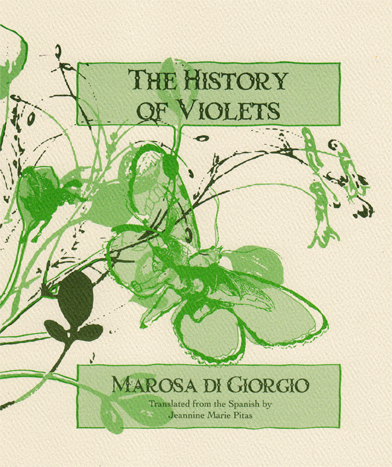There is no doubt at this point that Marosa di Giorgio is one of the greatest Latin American writers of the twentieth century. Her work, which cuts across all genres, has opened up new avenues for poetry and prose alike. Her incomparable world and style both come alive in this translation by Jeannine Marie Pitas. It was high time for American readers to have access to this and other precious jewels di Giorgio grew in her magnificent garden.
Mercedes Roffé
Drawn by memory, the narrator advances through the realm of childhood, unearthing from the family orchard in the deep Uruguayan countryside a perplexing landscape of becomings.... It is not strictly the sinister that speaks in these startling texts, but the condensation of the marvelous and the sinister, skillfully noted between dashes, like perfume in a bottle.
Lila Zemborain
Di Giorgio’s delicately extravagant poems loosely weave free verse and traditional Spanish meters to yield an unrestrained movement between the human and the animal, the overtly sensual and the intimately painful, the diaphanous underside of nature and the blunt cruelty of Uruguay’s military dictatorships.
Anna Deeney
There’s a lot at stake here, namely the opportunity for a new generation of American poets to take di Giorgio as a model for wresting the “poetry of witness” away from humanism’s easy faith in testimony and remembering that the imagination is the organ of compassion.
Farid Matuk
Jeanine Marie Pitas does an excellent job translating di Giorgio, and she should be commended for bringing us the work of such a strange and wonderful poet.
Daniel Borzutzky, Asymptote
The History of Violets is a fascinating blend of beautiful description and disturbing narrative. Di Giorgio's style emerges as precise and haunting in Pitas's skilled translation.
newpages.com
